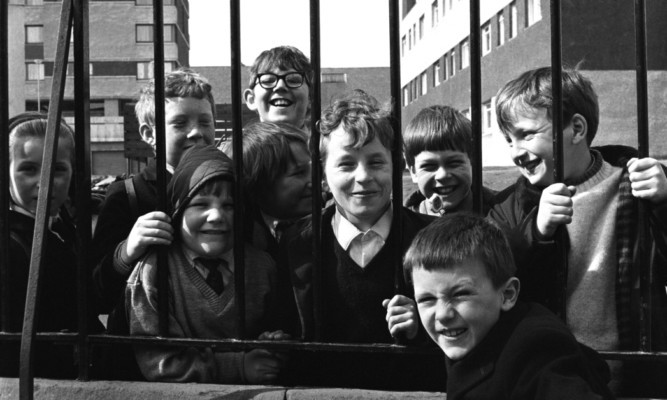They say if you can remember the 1960s you weren’t there.
But the artist behind a new exhibition of striking black-and-white images of Dundee taken in 1968 is hoping this is not the case and that people who were in his photographs – or know who was – come forward to help him identify his subjects.
Twenty-two pictures were taken by Phil Thomson during a single month in 1968 when he was studying at Duncan of Jordanstone College of Art.
Originally exhibited at a highly successful show in Birmingham, ‘mono 68’ will now open at the University of Dundee’s Lamb Gallery on January 16.
Phil, now a design lecturer at Birmingham City University, decided to re-examine the photographs last year.
Using social media, he has subsequently attempted to track down information about the people and places he captured at a time when much of Dundee’s medieval and Victorian fabric was surrendered to modernity and new ideas surrounding social planning.
Phil said: “The images are a snapshot of Dundee and its inhabitants, in transition from the post-war austerity years to the brave new world of flyovers, shopping centres and tower-blocks.
“I was aiming to capture the social and urban characteristics of the period a pronounced gender divide in the workplace, the street as playground, graffiti as an emerging means of expressing identity, personal transactions rather than digital interactions and the nature of inner-city transport. They give a distinct feeling of a lost world, almost a sense of lost innocence.”
Phil will return to Dundee for the first time in several years to open the exhibition and will once again find a city in transition, with many of the buildings he captured in their infant glory also now consigned to history after their reality fell short of the planners’ lofty aspirations.
He is attempting to trace the people in the pictures and to find out as much as possible about the buildings that feature as part of a wider research project.
University museum curator Matthew Jarron said: “Phil’s photographs record the city at a time of extraordinary transformation, and we’re thrilled to be displaying them in Dundee for the first time.”
The exhibition will be launched on at 5.30pm on Friday January 16 with a free talk by Phil about the work in the D’Arcy Thompson Lecture Theatre.
Entry is free and open to all and there is no need to book in advance.
